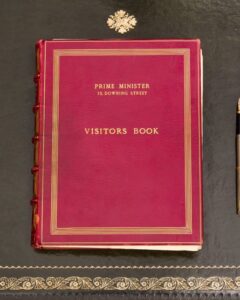A sculpture portraying the enraged ghost of a Belgian military leader who was decapitated during a rebellion in the Congo in the 1930s will be exhibited at the Dutch pavilion of the current Venice Biennale. Its purpose is to initiate a discussion about the overlooked colonial issues within the art community, as well as at the neighboring Belgian pavilion.
The sculpture of Maximilien Balot, a colonial leader, will not be physically at the biggest art event. Instead, a livestream from a gallery in Lusanga, located in the Democratic Republic of the Congo, will be shown on a screen. The artwork will be exhibited at the festival for six months.
The VMFA, which currently owns the sculpture, has announced that it will loan it to the Congolese gallery in April. This decision was made in response to years of requests for the sculpture to be temporarily returned to its place of origin.
Ced’art Tamasala, one of the Congolese artists involved in the Dutch pavilion, stated that the Balot sculpture will spark discussions not only about returning art, but also about returning land.
During the 1931 rebellion of the Pende people against Belgian colonialism in the Kwilu region of Congo, Balot was beheaded and dismembered. The uprising was triggered by the assault of a Pende woman and led to numerous Pende individuals being brutally tortured and murdered.
Following the brutal suppression, the widow of the officer stated that despite her husband’s death in a “terrible manner […] I comprehend their rebellion”.
The figure, carved shortly after Balot’s death, is believed to have a narrow face and prominent eyes, reflecting an expressionist style. This occurred during a time when the Pende people thought they had successfully expelled foreign invaders, before facing potential retaliation. As a means of harnessing the deceased officer’s anger, a ritual specialist would have charged the figure with his spirit, turning it into a powerful object. The identity of the figure’s creator remains a mystery.
In 1972, during a trip to Lusanga, American scholar Herbert Weiss bought the statue for $120 (£95). In 2015, it was legally sold to the VMFA.
The CATPC, or Congolese Plantation Workers’ Art League, located in Lusanga, has been working to obtain a loan for their sculpture. While their efforts were initially unsuccessful, things changed when Renzo Martens, a Dutch artist who helped establish the collective, was approached to design the Netherlands’ pavilion at the 60th Biennale di Venezia.

The artwork will be shown at the White Cube gallery in Lusanga from April 20 to November 24, 2024, alongside a global art exhibit.
The Mondriaan Fund, an organization in charge of the Dutch participation in the Biennale, covers the expenses of the loan. However, a curator from VMFA will be present during the transportation of the artwork and will supervise its installation.
The CEO and director of the VMFA, Alex Nyerges, stated that the transfer of a wooden sculpture from an American museum to one in the Democratic Republic of the Congo holds great historical importance. This event is hoped to spark a fresh era of cooperation and alliances among museums on both continents.
The Dutch pavilion will not only feature a live broadcast of the Balot sculpture, but also display a collection of sculptures made of palm oil, sugar, and chocolate. These sculptures will depict events from the Pende rebellion.
The Dutch pavilion is situated on the western side of the Giardini della Biennale, approximately 5 meters away from the Belgian pavilion. According to Martens, the placement of the screen featuring the Balot sculpture will be arranged to face the neighboring building.
In 1885, Leopold II, the king of Belgium at the time, asserted ownership over the majority of the Congo Basin and enforced a harsh system of economic exploitation. It wasn’t until 1960 that Congo achieved independence, and it took another 60 years for King Philippe of Belgium to apologize for the atrocities that occurred during his country’s reign.
The Petticoat Government collective will represent Belgium at the art event, showcasing a themed show featuring folkloric giants from Belgium, France, and Spain. The DRC has not yet had a pavilion at the biennale.
Tamasala stated that Belgium has greatly profited from the use of forced labor on plantations in the Congo. They believe it is the responsibility of Belgium to address the ongoing injustice and include the co-financiers of the museum.
Source: theguardian.com


















